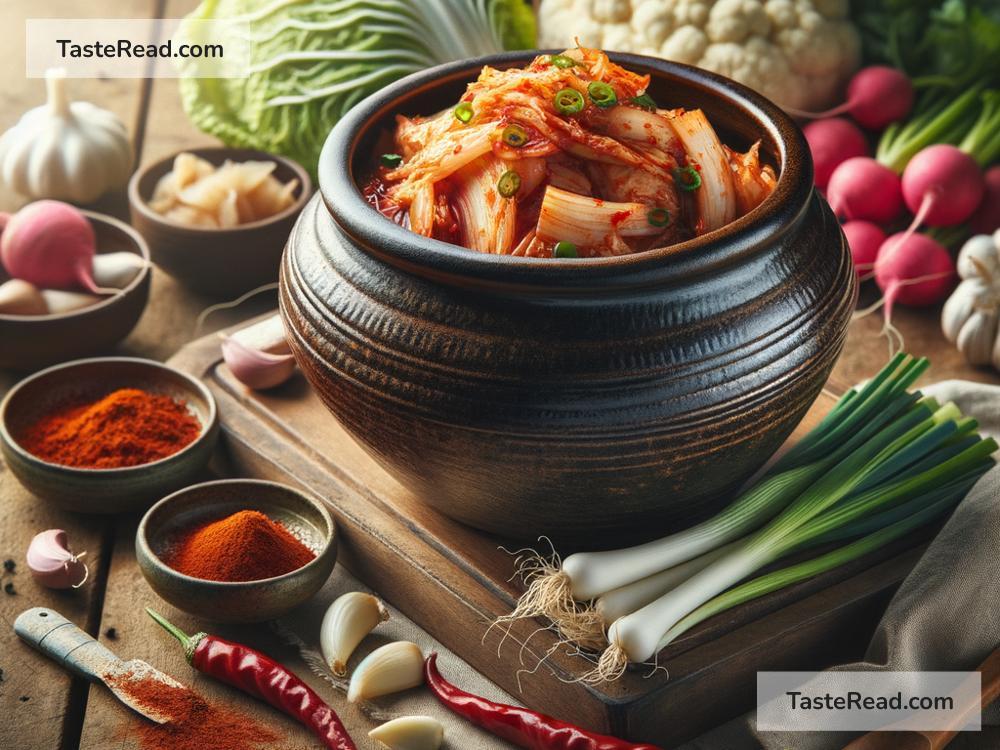The Story of Korean Kimchi: A Delicious Tradition
Kimchi is one of Korea’s most famous foods. It is enjoyed not only in Korea but all over the world! You might know it as a spicy, sour side dish made of fermented vegetables, but kimchi is more than just food—it’s a connection to Korean history, culture, and identity. Let’s take a journey through time to learn about kimchi and its historical origins.
What Is Kimchi?
Kimchi is a traditional Korean dish usually made by fermenting vegetables, most commonly napa cabbage and radish, with seasonings like chili powder, garlic, ginger, and fish sauce. The result is a dish full of bold flavors—spicy, tangy, and savory—that pairs perfectly with rice, soups, and meats.
But kimchi isn’t just one recipe. There are over 100 types of kimchi across Korea, varying by region, season, and ingredients. For example, people in colder northern areas often enjoy “baek kimchi,” a mild, non-spicy version made without chili powder. In warmer southern regions, kimchi is spicier and saltier to better preserve it in the heat.
The Origins of Kimchi: A Dish Born from Necessity
Kimchi’s history goes back thousands of years. The earliest record of kimchi dates to Korea’s Three Kingdoms Period (approximately 57 BCE to 668 CE). At that time, Korea had long winters, and fresh vegetables couldn’t grow during the cold season. To solve this problem, people developed methods to preserve vegetables so they could eat them year-round. They discovered that fermentation was a great way to store food while adding flavor and nutrients.
Early versions of kimchi were different from the spicy dish we know today. In ancient times, Koreans used salt to ferment vegetables like cucumbers and radishes. Seasonings like garlic and ginger were added later over the years. Korean historical texts from the Goryeo Dynasty (918–1392) mention fermented vegetable dishes, showing that kimchi was evolving into more complex recipes.
The Introduction of Chili Peppers
The spicy taste that kimchi is famous for didn’t exist until the late 16th century. Chili peppers were introduced to Korea after European traders brought them from the Americas. Chili peppers quickly became popular in Korean cooking, and by the 18th century, they had become a key ingredient in kimchi.
Adding chili peppers not only gave kimchi a spicy kick but also helped with fermentation. Chilies contain natural antibacterial properties, which helped preserve kimchi for longer periods.
Kimchi in Korean Culture
Kimchi isn’t just a food; it’s an important part of Korean identity. Making kimchi is a social activity that brings families and communities together. In the past, people would gather during late autumn for “kimjang,” the annual tradition of preparing large amounts of kimchi to store for the winter. Kimjang is a time of teamwork, sharing, and bonding. Even today, many Korean families continue this tradition.
Kimchi is also deeply woven into Korean meals. It’s served as a side dish at nearly every meal and can be used as an ingredient in soups, stews, fried rice, and pancakes. The health benefits of kimchi have made it popular worldwide, as it’s rich in vitamins, probiotics, and antioxidants that support digestion and overall health.
Kimchi in Modern Times
In recent decades, kimchi has gained international fame. People from all over the world are discovering its unique flavors and versatility. Korean restaurants, cooking shows, and cultural exports like K-pop have helped introduce kimchi to new audiences.
In Korea, kimchi remains a symbol of pride. There’s even a museum dedicated to kimchi in Seoul, called the Kimchikan Museum, where visitors can learn about its history, cultural importance, and variety.
In 2013, UNESCO recognized kimjang, the tradition of preparing and sharing kimchi, as an Intangible Cultural Heritage of Humanity. This recognition highlights kimchi’s significance not just as food but as a living tradition that connects people.
A Dish That Brings People Together
Kimchi has traveled a long road, from a simple way to preserve vegetables to a global symbol of Korean culture. Its origins reflect the resourcefulness of ancient Koreans, who turned limited resources into something delicious and nutritious. Over time, it has grown into a dish that brings people together, whether through tradition, shared meals, or cultural appreciation.
If you’ve never tried kimchi, why not give it a shot? You can find it at Korean grocery stores or even make it at home. By tasting kimchi, you’ll experience not just a flavorful dish but a piece of Korean history—and maybe even be inspired to learn more about Korea’s rich culture.
Kimchi is more than food; it’s a story of survival, creativity, and community. From ancient roots to modern fame, kimchi continues to be loved by people everywhere—and it’s sure to stay a part of Korea’s legacy for generations to come!


